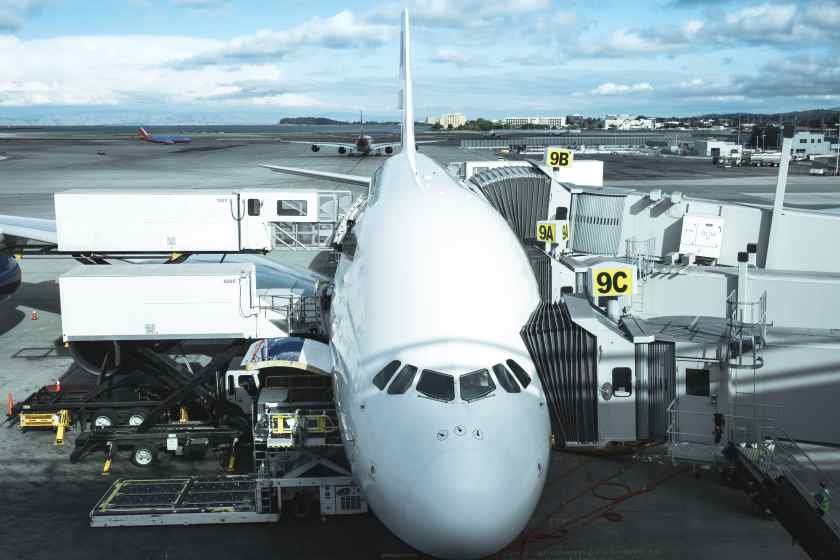Monday, July 7, 2025

With the onset of the northern summer, when the global tourism sector is at its busiest, the World Travel & Tourism Council (WTTC) has made an inaugural call for improved governance in tourism. In its newly published paper, Managing Destination Overcrowding: A Call to Action, the WTTC points out the reality that although overcrowding has long been blamed as the bane of popular destination pressures, the real issues are actually deeper systemic ones. Among them are deficiencies in investment in essential basic structures, failures in urban planning, and fragmented decisionmaking. It calls for increased balance and longer-term thinking in the handling of the tourism industry’s runaway expansion so communities and tourists can enjoy benefits alongside the industry’s gains.
With tourism now representing one in every 10 jobs globally and contributing nearly 10% of global GDP, its economic importance is undeniable. According to the WTTC, the Travel & Tourism sector is expected to contribute nearly $11 trillion to the global economy in 2024 and support 357 million jobs. However, with such immense growth comes significant responsibility to manage these developments carefully to prevent overcrowding, environmental degradation, and a diminished experience for both locals and visitors.
1. Tourism’s Growing Importance: A Double-Edged Sword
The WTTC’s report highlights that the global tourism industry is projected to contribute almost $11 trillion to the world’s economy in 2024, representing a significant portion of global GDP. This immense growth is anticipated to support 357 million jobs, which will be particularly important as the world emerges from the challenges posed by the pandemic. Travel & Tourism’s potential to drive economic recovery and growth cannot be overstated.
However, without proper management, the benefits of tourism can be overshadowed by negative impacts such as overcrowded attractions, overburdened infrastructure, and strained local communities. The rising number of visitors in popular tourist destinations often leads to pressure on local infrastructure, including transportation, healthcare, sanitation, and housing. This leads to frustration for both residents and tourists and can ultimately harm the tourism experience itself.
2. Overcrowding: A Symptom of Deeper Issues
While overcrowding is often seen as the problem, the WTTC stresses that it is only a symptom of much deeper issues. The report points out that overcrowding can often be traced back to insufficient investment in tourism infrastructure, poor urban planning, and the lack of a coordinated approach to tourism management. The rapid growth in tourism numbers in certain destinations, particularly in Europe, has led to significant pressure on local resources, often leaving residents and tourists alike grappling with inadequate services.
The report also emphasizes that many popular destinations have not invested sufficiently in the infrastructure needed to support the growing number of visitors. This underinvestment leads to the deterioration of public services, which in turn affects the overall visitor experience and the quality of life for locals.
The WTTC suggests that governments and businesses need to collaborate to address these issues by developing a strategic and sustainable approach to tourism management that includes better infrastructure planning and a more thoughtful approach to decision-making.
3. A Call to Action: Six Steps for Better Tourism Management
The Managing Destination Overcrowding report outlines six practical steps that destinations can take to better manage the influx of visitors. These steps aim to ensure a more sustainable tourism model, which benefits both local communities and visitors. Here’s a breakdown of these strategies:
- Get Organized: Destinations should bring the right stakeholders together, including local governments, tourism authorities, businesses, and residents. Forming empowered taskforces to develop long-term strategies can help ensure that tourism growth is well-managed.
- Make a Plan: A comprehensive, data-driven tourism plan should be created, taking into account current infrastructure capacities and future growth projections. This plan should address potential areas of overcrowding and prioritize areas for investment.
- Improve Data Usage: By utilizing better data and planning tools, destinations can manage visitor numbers more effectively. This includes collecting data on visitor flows, spending habits, and peak times to make informed decisions about resource allocation.
- Engage the Local Community: It’s essential to involve residents in the decision-making process. This will help ensure that the local community has a say in how tourism is managed and that their needs are taken into account.
- Promote Sustainable Tourism: Destinations should promote sustainable tourism practices, focusing on preserving local culture and the environment. This includes encouraging visitors to engage in eco-friendly travel habits, such as using public transport or supporting local businesses.
- Adopt Technology Solutions: Innovative technologies can help manage crowds, improve the flow of tourists, and optimize the use of resources. This might include smart ticketing systems, mobile apps for real-time information, or AI-driven crowd management tools.
4. The Role of Governments and Businesses in Sustainable Tourism
The responsibility for managing tourism effectively falls not only on governments but also on businesses and stakeholders within the industry. Governments must allocate sufficient resources to improve infrastructure and create long-term plans to handle tourism’s growth. In doing so, they can ensure that the economic benefits of tourism are shared across the community and that the negative effects, such as overcrowding and resource depletion, are minimized.
Meanwhile, the private sector also plays a crucial role in developing sustainable tourism practices. Hotels, airlines, and other travel companies should be incentivized to adopt environmentally friendly practices, such as reducing waste, minimizing energy use, and ensuring that their services are accessible to both locals and tourists. Businesses should also support local initiatives and promote community-based tourism, which can spread the economic benefits of tourism more evenly.
5. What Does This Mean for Global Tourism?
As the WTTC’s report highlights, the future of global tourism depends on smarter, more sustainable management practices. By taking proactive steps to manage overcrowding, invest in infrastructure, and foster greater collaboration between governments, businesses, and local communities, the tourism industry can continue to thrive without sacrificing the experiences that make it so valuable.
Properly managed tourism can bring numerous benefits, including cultural exchange, environmental preservation, and economic growth. However, to ensure that these benefits are not overshadowed by overcrowding and resource depletion, governments and industry leaders must act swiftly and decisively.
6. Conclusion: Moving Toward Smarter Tourism Management
As the global tourism sector recovers and grows, destinations must adopt smarter tourism management strategies to avoid the pitfalls of overcrowding and underinvestment. The WTTC’s report offers clear, actionable steps to balance growth with sustainability, ensuring that both tourists and local communities benefit from the influx of visitors. By embracing smarter planning, investing in infrastructure, and fostering collaboration, destinations can continue to reap the rewards of tourism while preserving the charm and cultural richness that make them unique.
It’s time for action because tourism continues to be the cornerstone of the global economy. Managing it in a responsible way will enable future generations to reap its benefits without being compelled to compromise the integrity of the very attractions which make it so special.









